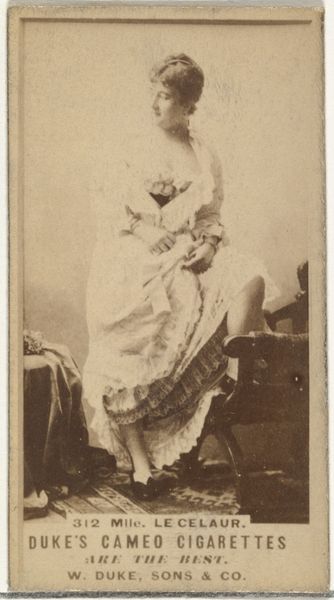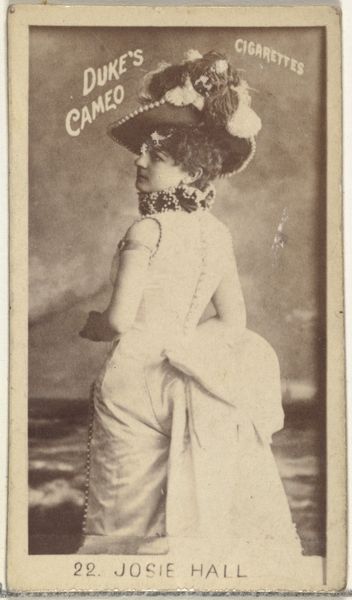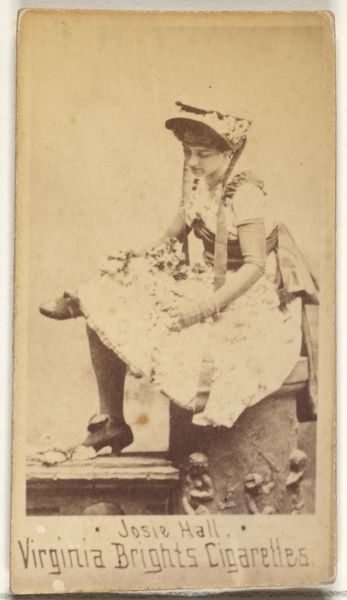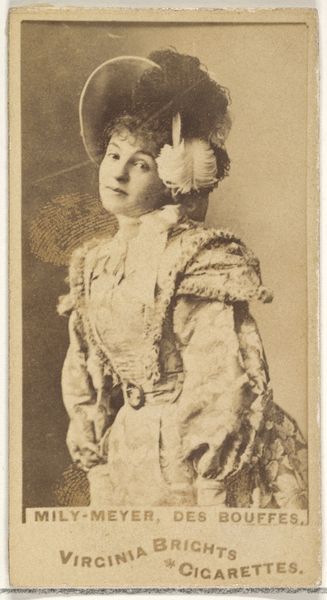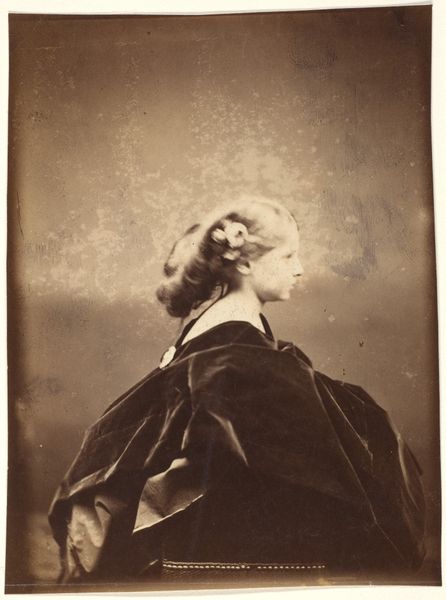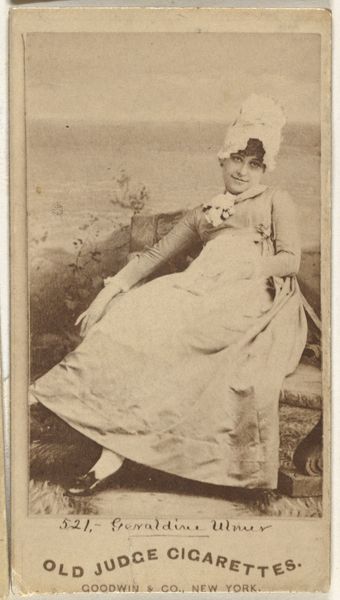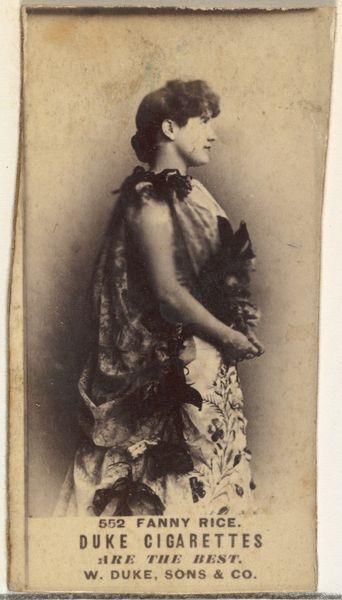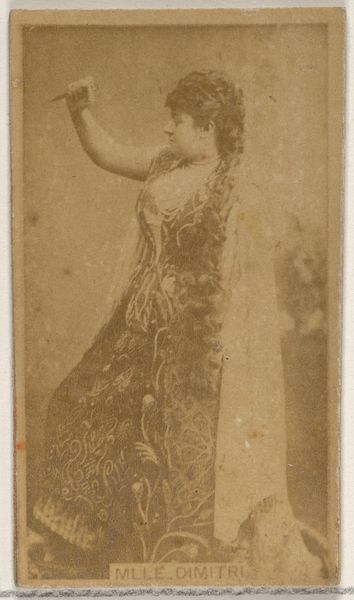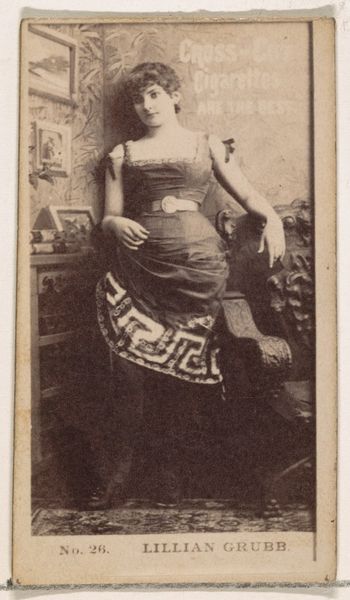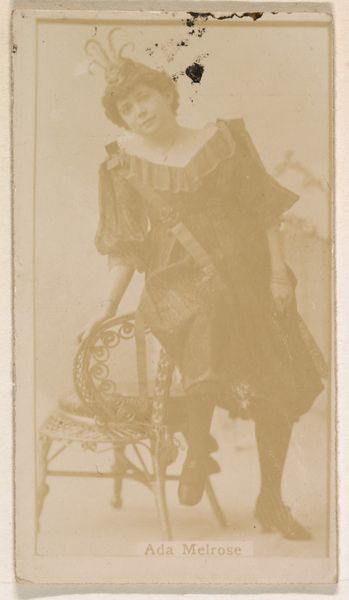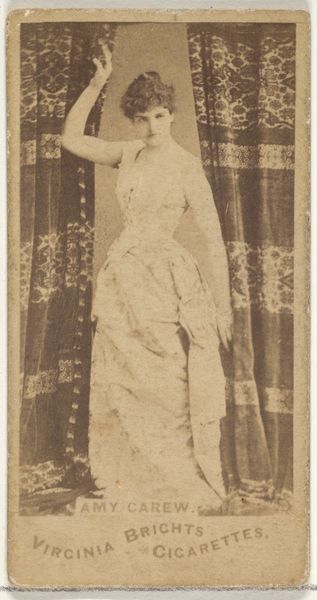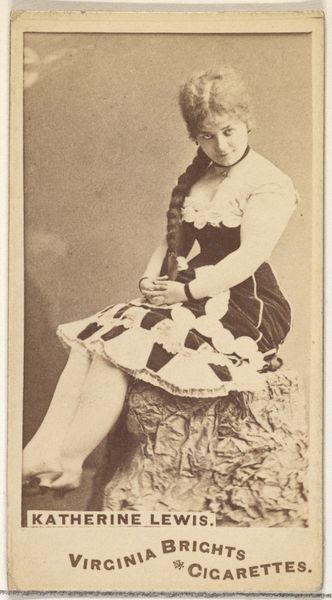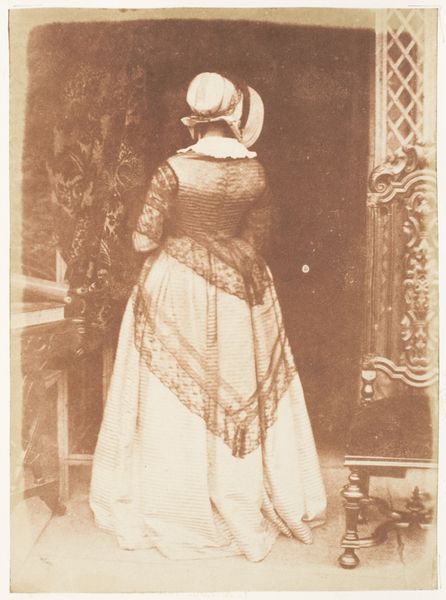![[Woman Seen from the Back] by Onésipe Aguado de las Marismas](/_next/image?url=https%3A%2F%2Fd2w8kbdekdi1gv.cloudfront.net%2FeyJidWNrZXQiOiAiYXJ0ZXJhLWltYWdlcy1idWNrZXQiLCAia2V5IjogImFydHdvcmtzLzgwNGE0NzYyLTRlZjctNDcyNS05Mzc5LTM0MTc0MmY3NjZmOS84MDRhNDc2Mi00ZWY3LTQ3MjUtOTM3OS0zNDE3NDJmNzY2ZjlfZnVsbC5qcGciLCAiZWRpdHMiOiB7InJlc2l6ZSI6IHsid2lkdGgiOiAxOTIwLCAiaGVpZ2h0IjogMTkyMCwgImZpdCI6ICJpbnNpZGUifX19&w=3840&q=75)
photography, gelatin-silver-print
#
portrait
#
print photography
#
photography
#
gelatin-silver-print
Dimensions: Image: 30.8 × 25.7 cm (12 1/8 × 10 1/8 in.) Mount: 39.4 × 31 cm (15 1/2 × 12 3/16 in.)
Copyright: Public Domain
Editor: This gelatin silver print, “[Woman Seen from the Back],” was created by Onésipe Aguado de las Marismas sometime between 1860 and 1864. What strikes me most is the pose; turning away from the viewer like this feels unusual for a formal portrait. What's your read on this choice? Curator: It's fascinating, isn’t it? The averted gaze subverts the typical power dynamic inherent in portraiture. Mid-19th-century photography was heavily influenced by societal norms, and portraits, particularly of women, often served as social signifiers. By showing the subject’s back, Aguado disrupts that expectation. Instead of direct engagement, we're invited to observe, almost to eavesdrop, on a moment. It begs the question, who was this woman, and what was her place in society? Editor: So you're saying the subversion might be a comment on the restricted role of women in society? Curator: Possibly. Photography was still a relatively new medium then. Its democratization meant portraiture became accessible to the burgeoning middle class, not just the elite. Think about the politics of representation—who gets to be seen and how. Is she refusing the male gaze? Is it a comment on feminine privacy? Aguado’s choice certainly invites this sort of speculation. Editor: It's almost like she's claiming ownership over her own image, denying the viewer full access. The photograph becomes an assertion of privacy. Curator: Precisely! And think about where it was exhibited, how it was viewed. It might not only challenge power dynamics within portraiture itself but also broader conventions on exhibiting the female figure at that time. What does thinking about this make you wonder? Editor: I wonder how contemporary audiences would interpret the same image if it were made today, especially with discussions about visual objectification and the male gaze being mainstreamed in society. Curator: It is a worthwhile reflection! Understanding historical context helps us analyze both past and present social structures related to art.
Comments
No comments
Be the first to comment and join the conversation on the ultimate creative platform.
